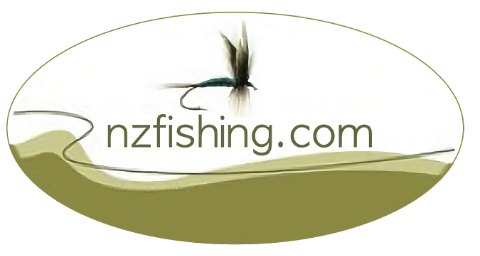| Backcountry fishery |
The Mohikinui River , upstream from the confluence with the Rough and Tumble confluence is designated a backcountry fishery requiring all anglers to obtain a backcountry licence. |
| Fish type |
The Mokihinui holds good numbers of brown trout. The fish are generally over 2 kgs (4.5lb) with a good number of trophy size fish for the more experienced angler. |
| Situation |
The Mokihinui drains the Matiri Ranges and flows west through virgin beech forest and open tussock country to enter the Tasman Sea about 40kms (30 minutes) north of Westport. At the Forks the river divides into two branches, the North and South Branch, both of which have a number of smaller tributaries which provide small water fisheries. |
| Maps |
Access map
|
| Check conditions |
View the MetService weather forecast |
| Description |
In the upper reaches the river is very remote but has good stretches of open water that are easy to fish. The upper reaches are divided into two branches; the South Branch and the North Branch. Each of these are substantial fisheries and offer many days of water to explore. The river runs very clear over a stone and rock bed and the large trout can be easily spotted in the long runs and pools. The water can rise very quickly after rain but tends to also drop and clear quickly. When the water is high and discoloured, fish can still be found along the clearer edges of the flow and around any in-flowing clear streams.
This is first class fishing water in a pristine wilderness environment. Fish are large and often in excellent condition. They are fit and feisty and do not come to the net easily.
There are a number of tributaries that are worth exploring that enter both branches in the upper reaches.
The lower reaches hold good numbers of fish, some of them sea-run brown trout. These are best fished for when the whitebait are running up the river. |
| Access |
Middle and upper reaches: The more interesting middle reaches and the two branches can only be reached via a well defined walking track or by helicopter.
Lower reaches: Access can be gained to the lower reaches on Highway 67 and taking the Mokihinui Rd at the small settlement of Seddonville. |
| Recommended lures |
Nymphs: Small nymphs such as Hare and Copper, Pheasant Tail and Caddis imitations all work well in sizes 14 or smaller.
Dry flies: Small flies such as Royal Wulff, Hardies Favourite, Dad's Favourite and March Brown all work well at all times of the day. Fish bushier flies such as Coch-y-Bondhu and Humpy over the faster water.
Wet flies: Small wets like Greenwell's Glory, March Brown and emerger Sedge patterns work well when fished sub-surface. These flies are particularly effective when fishing the evening rise. Large flies such as a Parson's Glory or Grey Ghost are excellent when the trout are chasing the whitebait in the lower reaches and estuary. Use large dark patterns such as a Hairy Dog or Scotch Poacher during the night.
Spinners: Small bladed spinners (Mepps or Veltic) fished upstream into the faster water or through the deep pools. Spinners also work well in the lower reaches when the whitebait are running. |
| Tributaries |
As well as the two major branches of this river there are a number of smaller tributaries that also offer excellent fishing. Notable are
Hennessy Creek: A very fast flowing water that enters the South Branch near Goat Creek Hut. This tributary can best be described as a "rusher" as the water cascades down a small valley in a series of rapids. There is some holding water in pockets but is best left to the fit and energetic angler.
Johnson: The Johnson is a tributary of the North Branch and provides that has a good number of fish in its clear waters. It provides many kilometres of fishing for a good stock of large fish.
Allen: The Allen is a small tributary of the North Branch that holds good stocks of fish, particualrly early and late in the season. It is clear and offers excellent sight fishing for the large fish it holds. It has good access and is easier to fish than some of the other tribuatries. There is a landlocked small lake in the headwaters which holds a population of large fish that can be seen crusing the deep weed beds.
Larrikin: The Larrikin is a boisterous tributary that enters the South Branch approx 6 kms updtream from the junction at the Forks with the North Branch. It is a series of fast runs and rapids punctuated by deep holding pools. Fish are not numerous but are of good size. This small water requires a lot of wading, often through deep water. |
| Regulations (1) |
| Applicable to |
Mokihinui River and tributaries upstream of the cableway at Welcome Creek.
Note: A backcountry licence is needed to fish above the Rough and Tumble confluence.
|
| Region |
West Coast |
| Season |
1 Oct-30 Apr |
| Methods |
Artificial fly, spinner, bait |
| Bag limit |
Total sports fish: 2 |
| Size limit (cm) |
No limit |
| Regulations (2) |
| Applicable to |
Mokihinui River downstream of the cableway at Welcome Creek.
Note: A backcountry licence is needed to fish above the Rough and Tumble confluence.
|
| Region |
West Coast |
| Season |
Trout: All year
Salmon: 1 Oct-30 Apr
|
| Methods |
Artificial fly, spinner, bait |
| Bag limit |
Total sports fish: 2 |
| Size limit (cm) |
No limit |


